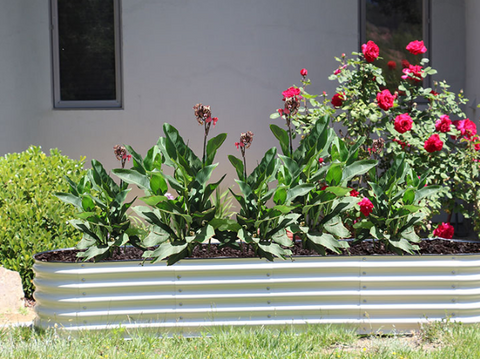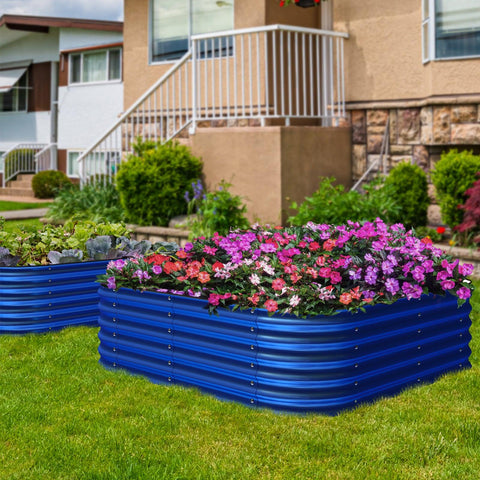Tips from Olle Garden Bed: How To Winter Hibiscus Plants
As the weather began to change and the days became shorter, it was time to consider how to make hibiscus spend the winter. Although hibiscus plants can be planted outdoors all year round in tropical climate, they need to spend the winter in areas with low temperature. Because hibiscus is a tropical plant, it needs some labor to survive in cold months. The last thing you want is to see your beautiful hibiscus die in the cold. The following content also has some reference value for raised garden beds.
With proper care, your hibiscus will stay healthy and energetic in the cold winter months. If you want to enjoy their flowers again, it is important for plants to winter correctly.

Importance of Hibiscus hibiscus overwintering
Wintering hibiscus plants is essential to protect them from extreme temperatures and drying winds. The cold winter air will dry the soil, leading to the decline of buds. If it is not controlled, it may even kill plants.
Hibiscus plants are best wintered indoors because they are tropical. If you live in a tropical area and it suddenly starts to snow, you don't know what to do! This plant likes warm temperature and bright light, making it a terrible companion for snowfall. Not to mention that they despise sitting in the water.
What do you need?
The following conditions are required for hibiscus plants to survive the winter:
Clean and sharp trim scissors
Insecticide soap
A warm and sunny place indoors
A step-by-step guide on how to winter hibiscus plants
Winter can be difficult for hibiscus plants, but you can take some simple steps to ensure that they thrive throughout the season. Here is a step-by-step guide to how to protect your beloved flowers.
Step 1 – Check for pests
The first step in wintering hibiscus plants is to check for pests. Insects such as aphids, spider mites, thrips and whiteflies can quickly catch indoor plants, so please thoroughly check your plants before bringing them into winter.
If you find any pests on the plant or around the container, spray the affected area with a mild insecticide (such as neem oil) and isolate your plant. Quick application now can save you a lot of worries in the late season. Please read the label carefully first; Some pesticides may not be compatible with certain types of plants.
Step 2 – Adapt to your hibiscus
As the temperature drops, the plants will be gradually moved to the outdoor areas with less direct sunlight. This will help them adjust and protect themselves from sudden changes in the environment.
In addition, pay attention to the temperature level; Many hibiscus plants do not perform well in temperatures below 40 to 45 degrees Fahrenheit and need to adapt before frost or freezing. It is better to put your hibiscus plants in it before the first frost.

Step 3 – Cut some leaves
Trimming plants before bringing them indoors can help reduce their size and keep them soft, making them better adapted to smaller home environments. In order to properly trim the plant, use sharp and clean scissors or scissors to trim off any dead or damaged stems.
In addition, remove any suction cups (inward growing buds) near the base of the plant to avoid overcrowding in the future. This will make your hibiscus look neat. However, do not cut off too much; You don't want to impact your plants or cause excessive stress.
Step 4 – Bring them in
A temperature drop of 50 degrees Fahrenheit or less can damage plants that are used to the warmth of summer. When the temperature reaches 50 degrees Fahrenheit in the evening, please bring your hibiscus plants. As mentioned earlier, you should pay close attention to the first frost date expected in your area.
Step 5 – Care for your plants indoors
Once you bring the hibiscus plants indoors, there are some key things to consider to keep them thriving. First, they need less water in winter, because indoor temperatures are often more stable and there is no wind or rain. It is best to water only when the top half inch of soil feels dry. Excessive watering of hibiscus will lead to root rot, so please pay attention to the moisture content.
Find a sunny place in your house, but not too hot, too cold, and not close to any vents or vents. If any, a window facing south is the ideal choice, because it will provide consistent temperature and natural lighting throughout the day. If there is no direct sunlight, you can use an artificial growth lamp to provide all the nutrients your plants need
If you decide to place the plant on the window sill, make sure it is not pushed onto the glass. Plants should be a few inches away from windows to minimize cold damage.
Another thing to remember is that your hibiscus plant doesn't need much fertilizer in winter because of the low light intensity. Finally, check your plants regularly for pests. If you find any of these insects on the hibiscus plant, please treat the infection with insecticide soap.

Your plant may take some time to adapt to the new environment, so don't panic if it drops all its leaves soon after moving them indoors. This is the normal and natural part of the transition!
Start your winter gardening!
It takes extra effort to winter hibiscus plants, but it is worth it for their long-term health. By following the steps outlined in this guide, you will ensure that your favorite flower gets through the season easily. With proper care and maintenance, your hibiscus plants will thrive in spring!
